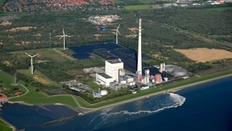- A 410 MW electrolysis plant is planned to supply 295,000 metric tons of hydrogen by 2030.
- The terminal will include an ammonia cracker to produce green hydrogen.
- Commissioning of the terminal is planned for the second half of this decade.
- Uniper is collaborating with Salzgitter and Rhenus Logistics on a green crude iron project.

Project Overview
Uniper plans to establish a hydrogen hub in Wilhelmshaven under the "Green Wilhelmshaven" initiative. The project includes an import terminal for green ammonia, equipped with an ammonia cracker to produce green hydrogen. Additionally, a 410-megawatt electrolysis plant is planned, capable of supplying around 295,000 metric tons of hydrogen, meeting 10% of Germany's projected demand by 2030.
Timeline and Feasibility
The commissioning of the new terminal is scheduled for the second half of this decade, contingent on national import demand and export opportunities. Uniper has submitted the project to the German Federal Ministry of Economics as an "Important Project of Common European Interest" (IPCEI) to promote integrated hydrogen projects across Europe.
Collaborative Efforts
Uniper is collaborating with Salzgitter, Rhenus Logistics, the city of Wilhelmshaven, and the state of Lower Saxony on a project to build a direct reduction plant with upstream hydrogen electrolysis. The goal is to produce around 2 million metric tons of green crude iron using hydrogen generated via wind power.
Strategic Importance
Hydrogen is seen as crucial for decarbonizing industries like steel production, which currently emits approximately one metric ton of CO2 per metric ton of crude steel produced. The project aims to address the significant gap between Germany's planned green hydrogen production (14 TWh) and the forecasted demand (90-100 TWh) by 2030, highlighting the need for hydrogen imports to meet climate goals.

